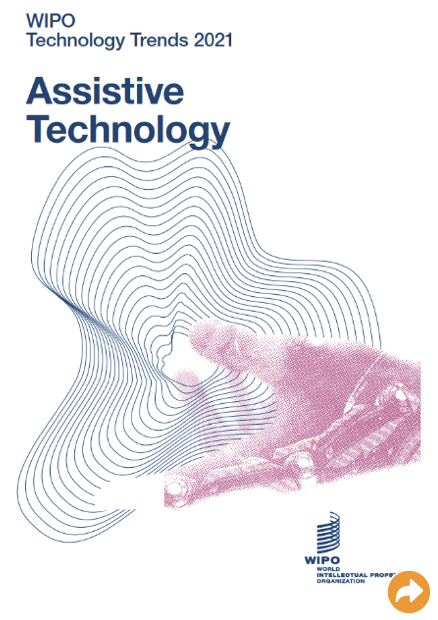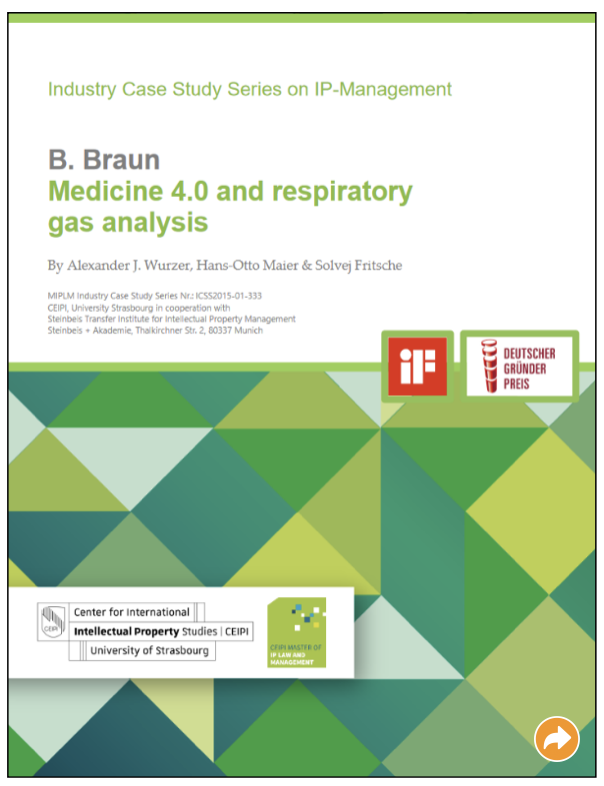Worldwide patent surge in assistive technologies: Best practice industry cases in IP-Management at Thyssenkrupp and B. Braun
The ageing of societies leads to a higher number of elderly people requiring some kind of assistive technology. Assistive technology comprises all technologies which support persons with disability in their daily lives. This includes technologies from hearing aids, spectacles, mobility accessories and communication tools. But not only the higher number of persons with disabilities, also the recognition of the access to assertive technologies as a human right leads to the growth of the industry and a related surge of patent activity. A recent WIPO report identifies, that the patent filings in assistive technology surge with 17% per year, which is threefold the yearly surge of all technologies.
 When searching for an example of the best industry practice in IP management in the field of assistive technology, the former stairlift business of Thyssenkrupp should come to mind first. Here, Thyssenkrupp did fully digitalize the sales and planning process for their stairlifts with the help of the use of augmented reality (AR) and the Microsoft HoloLens. The integration of AR helps to digitally measure the individual staircase of the customer and then plan and present the stairlift solution directly to the customer in their own home. This speeds up the sales process, since the customers can directly see what they get and can make their buying decision faster and with more trust in the offering. Also, the stairlift can directly go into production after the customer decided, since the data needed for production can be directly sent from the customer’s home to the production plant.
When searching for an example of the best industry practice in IP management in the field of assistive technology, the former stairlift business of Thyssenkrupp should come to mind first. Here, Thyssenkrupp did fully digitalize the sales and planning process for their stairlifts with the help of the use of augmented reality (AR) and the Microsoft HoloLens. The integration of AR helps to digitally measure the individual staircase of the customer and then plan and present the stairlift solution directly to the customer in their own home. This speeds up the sales process, since the customers can directly see what they get and can make their buying decision faster and with more trust in the offering. Also, the stairlift can directly go into production after the customer decided, since the data needed for production can be directly sent from the customer’s home to the production plant.
Cannot open the video? Please click: https://youtu.be/IgtHnCJJUMU
 Another industry which is turning more and more towards assistive technologies is the medical industry. Here, new medical devices can assist people with disabilities to restore the impaired human function partially or even fully. But the rapid growth of the industry combined with the digital transformation also poses challenges for the companies in the industry, especially in the field of IP management. Therefore, it is crucial to ensure the quality in IP management by the implementation of the quality standards DIN 77006 and ISO 56005. A best practice example how this can be done is described in the Industry cases study on IP management at B. Braun.
Another industry which is turning more and more towards assistive technologies is the medical industry. Here, new medical devices can assist people with disabilities to restore the impaired human function partially or even fully. But the rapid growth of the industry combined with the digital transformation also poses challenges for the companies in the industry, especially in the field of IP management. Therefore, it is crucial to ensure the quality in IP management by the implementation of the quality standards DIN 77006 and ISO 56005. A best practice example how this can be done is described in the Industry cases study on IP management at B. Braun.
When you want to learn more about the European IP management best practice with this and other industry case studies, please have a look at our Certified University courses: University Certificates in IP-Management



